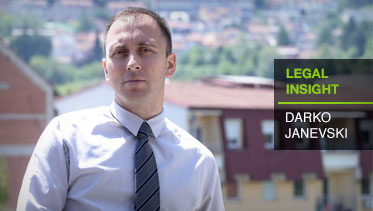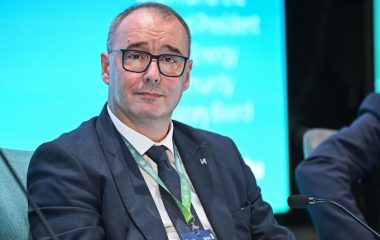
By Darko Janevski, Renewable Energy Specialist, USAID Clean Energy Investment Project implemented by Winrock International
What was the situation with the renewable energy investments in 2013?
Many renewable energy (RE) investors complained, and donor reports (USAID, IFC) from 2012 and 2013 noted that development of Macedonia’s significant RE resources have been constrained by gaps in the overall enabling environment. Too many RE-related administrative procedures (up to 15) were prescribed in numerous pieces of legislation, each involving many different institutions. Investors faced frequent and sometimes not very clear changes in the legislation, as well as with institutions and public servants who lack capacities to provide the necessary administrative service. All these led to a lengthy investment process – an average period of 36 months to put the small power plant into operation.
What was done in the last couple of years to improve the RE legal environment?
There is a popular belief, and at the same time misperception, that RE investment procedures are all about obtaining an energy license, the feed-in tariff and a status of preferential electricity producer. Sure, they are inevitable and important. But, the most cumbersome and time-consuming procedures are those related to land planning, conversion and management, as well as for obtaining construction permits. These are the procedures that every investor must go through, before it initiates the energy-related procedures.
The most cumbersome and time-consuming procedures are those related to land planning, conversion and management, as well as for obtaining construction permits.
Taking into consideration these facts, the USAID Clean Energy Investment (CEI) Project, implemented by Winrock International, put efforts in the past few years to modify these laws and bylaws, thus enabling investment-friendly environment. The CEI Project worked very closely with several government institutions to accomplish this goal by:
- Collecting and disseminating relevant information to the stakeholders;
- Using internal and external long-term and short-term consultants and experts;
- Organizing RE stakeholders’ forums as unique and useful public-private dialogue mechanism;
- Discussing and finalizing the proposals on the working sessions with the counterparts;
- Helping present and potential investors to understand the legal requirements;
- Capacity building activities (training, information sessions) for municipal administration and staff of other public institutions.
In addition, the government, based on its own assessment or at the request of the business community, introduced other changes in the relevant laws favorable for the RE investors.
What are the main legal changes introduced?
In general, the administrative procedures can be grouped in three phases: pre-construction, construction, and energy licensing.
The pre-construction phase includes procedures for urban planning, environmental licenses, agriculture land and forest conversion and lease of state-owned construction land. With the legal changes now in place, the length of this phase is reduced by five to seven months. The main changes that contribute to the reduced time-frame for completion of this phase are:
- Introduced possibility not to request the document for spatial planning conditions and electronic procedure for obtaining it;
- Possibility to adopt urban plan prior to issuing the land conversion document;
- Municipality mayor excluded from the initiative for adoption of urban plan;
- Procedural steps (draft plan, public presentation and survey) abolished and deadlines shortened for certain types of urban plans applicable to RE investors;
- E-contracting introduced and deadlines for the sub-phases shortened in the procedure for the lease of state-owned construction land.
In general, the administrative procedures can be grouped in three phases: pre-construction, construction, and energy licensing.
The construction phase includes procedure for preparation and submission of revised project design and other documents in order to obtain the construction permit. Due to the previously introduced and well-functioning e-permitting system, as well as the legal changes introduced, the length of this phase is now reduced by six months. The main changes that contribute to the reduced time-frame for completion of this phase are:
- Possibility to submit construction permit request without prior solving of all land property issues;
- Prescribed and shortened deadlines in the procedure to obtain consent and technically connect to the grid.
CEI Project’s work on modifying the legislation on energy licensing phase was temporary set aside and it is expected to be tackled in the upcoming period.
What is necessary to be changed in order to further simplify and shorten the RE investment procedures?
If the following legal novelties in the pre-construction phase are introduced, this phase could be reduced by additional six months:
- Ministry of Environment and Physical Planning to be excluded from the procedure for issuing document for spatial planning conditions;
- Government to be excluded from the procedure for conversion of agriculture land;
- Government to be excluded from the procedure for lease of state-owned construction land;
- Certain procedural deadlines to be further shortened.
If there is political will and determination to streamline RE investment process, the realization of the investment (putting the power plant into operation), which was already reduced by none to twelve months, might be cut by additional eight months, making it possible for the entire RE investment process to be completed in 18-20 months.
The time-frame for completion of the energy licensing phase could be also reduced by up to two months if the responsible authorities are willing to make the following changes in the secondary legislation:
- Abolish and shorten certain steps in the procedure for obtaining energy license and in the procedures for obtaining temporary and final decisions for preferential RE producer, both carried out by the Energy Regulatory Commission;
- Shorten the deadline to enter the constructed power plant in the Energy Agency register.
If there is political will and determination to streamline RE investment process, the realization of the investment (putting the power plant into operation), which was already reduced by none to twelve months, might be cut by additional eight months, making it possible for the entire RE investment process to be completed in 18-20 months.

















